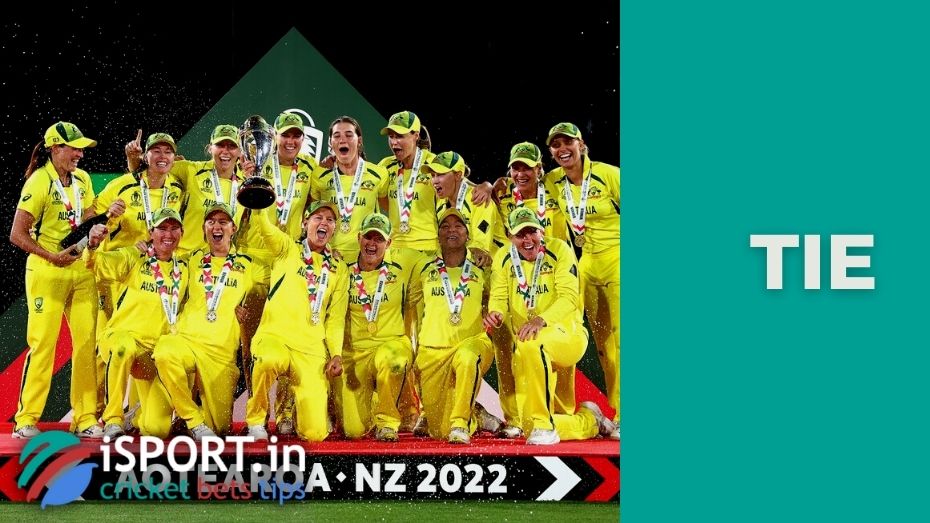Tie in cricket - what is it?

What is the goal of any team in a cricket match? Of course, it’s about earning runs and preventing the opponent from doing the same, but the main thing that every team and every player strives for is victory. But a cricket match, in addition to winning one team and losing the other, can have several other outcomes. One of these situations is the tie.
What is the tie in cricket?
Cricket is played by hundreds of thousands of people worldwide, and millions are watching the matches with bated breath. But this sport is not at all simple. This rule also applies to determining the results of the match.
Typically, a cricket match ends with one team winning and the other losing. The winner is the team with the most wounds when all the innings are played. If the match consists of one inning, the team with the most runs after the match wins.
In addition, a defeat is awarded to teams that surrender or refuse, in the opinion of the referees, to play.
The term tie in cricket refers to the outcome of a match when both teams have scored an equal number of points at the end of the match. This situation also happens in cricket matches with a limited number of overs and in test or first-class cricket.
Situations where neither team wins: how is the tie different from them?
The tie should be distinguished from the draw – in both cases, neither team won. The referee announces that the match is over with the tie when the innings are over, but the points scored by the teams are equal.
For example, the match between the West Indies and Australia ended with this result in 1960. The results of the match are presented in the table:
- Runs earned in the first innings Runs earned in the second innings Result at the end of the match
- Australia 505 232 737
- West Indies 453 284 737
For comparison, here are the results of another test match played in 1986 and also ended with the tie:
- Runs earned in the first innings Runs earned in the second innings Result at the end of the match
- Australia 574 170 744
- India 397 347 744
In other international cricket formats, ODI and Twenty20, teams can also score the same number of runs, but a tiebreaker is used to determine the winner. This could be:
- Bowl-out – Applied since 1991 and was inspired by the rules of penalty kicks in football. The essence of this method of determining the winner is that five bowlers from each team make one or two serves towards the unguarded wicket. The team that showed the best result becomes the winner.
- Super-over – Applied since 2008. In this case, teams are assigned another over with six innings.
- Any other way to determine the winner.
The situation is completely different with the draw. This situation occurs when two conditions are met:
- The team that is the batter in the fourth innings is not hitting the number of runs needed to win the match.
- The team serving in the fourth innings fails to knock out the battering team (to the bowl).
In addition, the match ends with a draw result if the game time expires before the fourth innings is played.
How often can the tie be in cricket?
This situation is so unusual that test cricket, like first-class cricket, keeps track of matches that ended with this result. The test match ended in a draw when the West Indies and Australia played against each other on December 9-14. The next such situation occurred in 1986 (Australia – India match). At the moment, these are all statistics. The history of test cricket does not know more tie results, although more than 2,000 matches have been played since 1877.
Many more first-class cricket matches have ended with this result: 67 matches in more than 200 years of the official history of first-class cricket.
- The first First-Class match to end with a tie was the Hampshire vs. the Kent match in 1783. The Hampshire had 140 runs in the first innings and 62 in the second, with the Kent having 111 runs in the first innings and 91 in the second.
- The last first-class match to end with this result was as recently as 2021. The opponents were the Khyber Pakhtunkhwa and the Central Punjab. The Khyber Pakhtunkhwa had 300 runs in the first innings and 312 in the second, the Central Punjab had 257 runs in the first innings and 355 in the second.
The tie is a rather rare situation in cricket, unlike in other sports disciplines, for example, in football. This is because in cricket matches, the number of runs is measured not only in tens but also in hundreds, and in this situation, coincidences in numbers are extremely rare.
